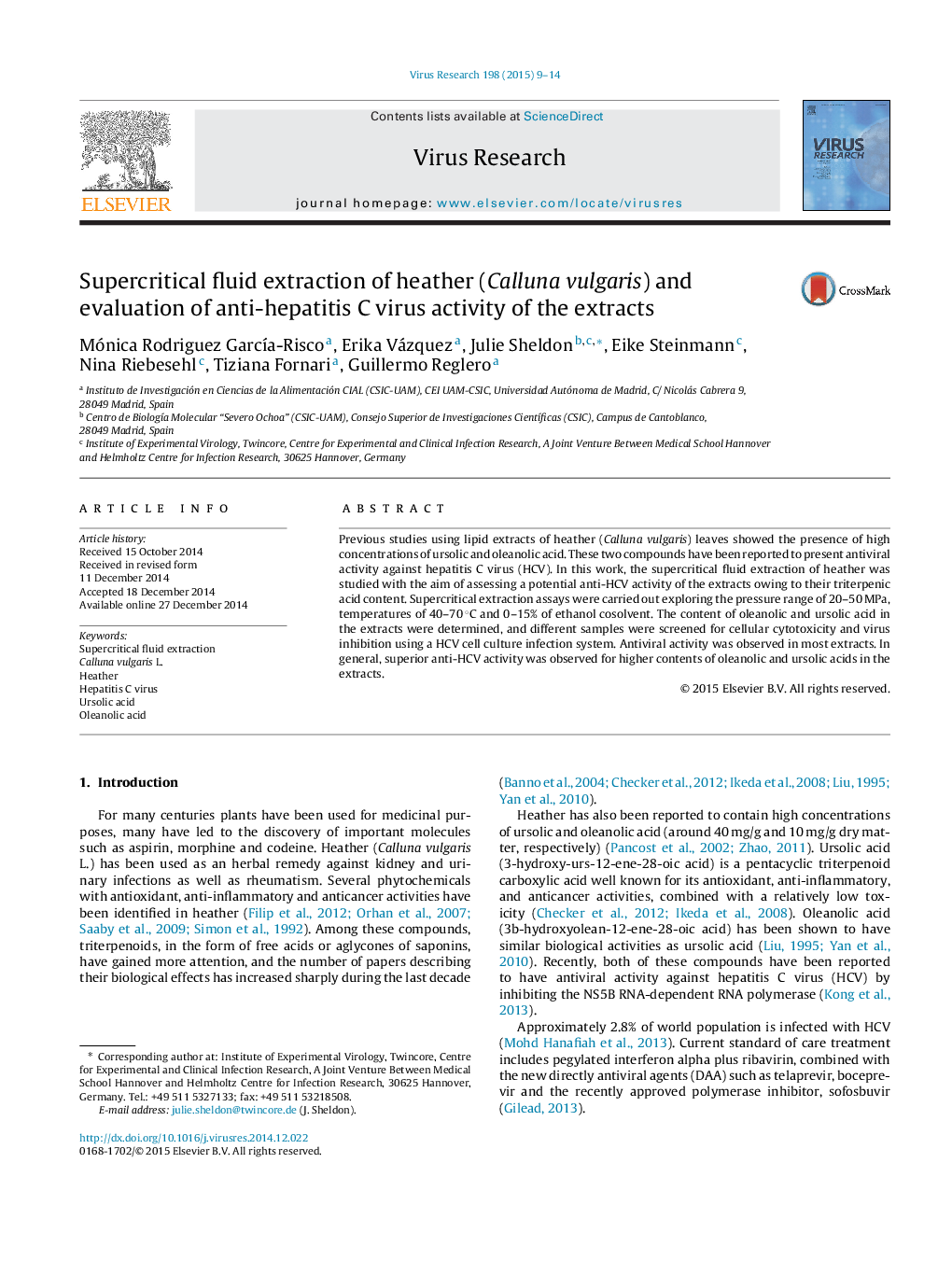| Article ID | Journal | Published Year | Pages | File Type |
|---|---|---|---|---|
| 3428321 | Virus Research | 2015 | 6 Pages |
•Supercritical fluid extraction produced heather extracts with high concentration of triterpenic (oleanolic and ursolic) acids.•A fourfold increase of extract yield is produced when using ethanol as CO2 cosolvent.•Superior anti-HCV activity was observed for higher content of oleanolic and ursolic acids in the extracts.
Previous studies using lipid extracts of heather (Calluna vulgaris) leaves showed the presence of high concentrations of ursolic and oleanolic acid. These two compounds have been reported to present antiviral activity against hepatitis C virus (HCV). In this work, the supercritical fluid extraction of heather was studied with the aim of assessing a potential anti-HCV activity of the extracts owing to their triterpenic acid content. Supercritical extraction assays were carried out exploring the pressure range of 20–50 MPa, temperatures of 40–70 °C and 0–15% of ethanol cosolvent. The content of oleanolic and ursolic acid in the extracts were determined, and different samples were screened for cellular cytotoxicity and virus inhibition using a HCV cell culture infection system. Antiviral activity was observed in most extracts. In general, superior anti-HCV activity was observed for higher contents of oleanolic and ursolic acids in the extracts.
